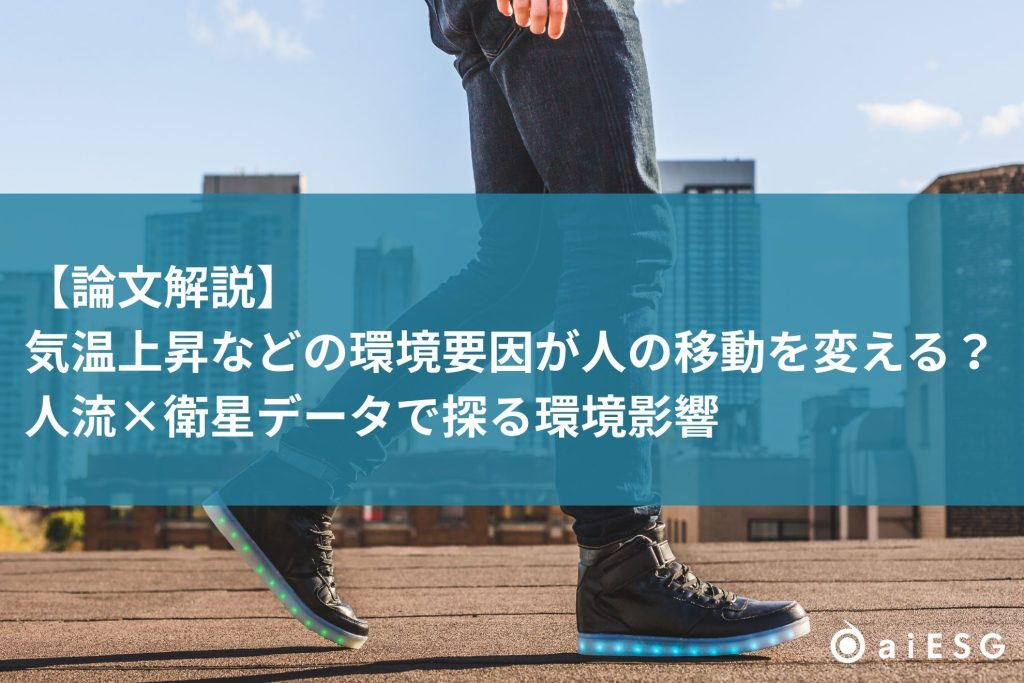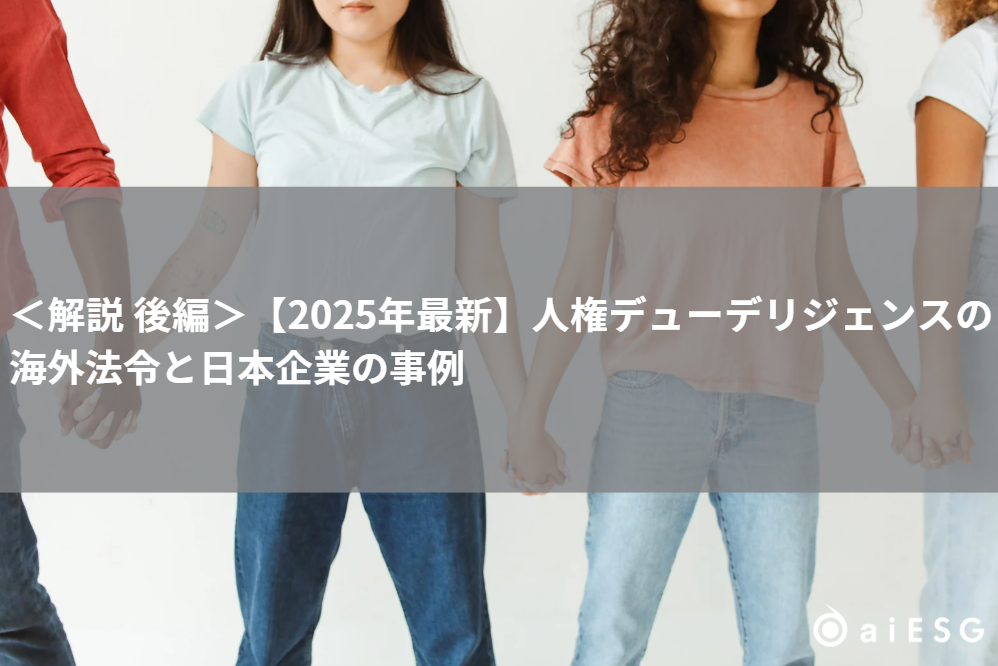INDEX
Clients
Company name: hap Corporationhttps://hap-h.jp/
Industry: Apparel
Address: Chuo-ku, Tokyo
Established in 2006. The company has developed a wide range of businesses from brand business to apparel of environmentally friendly and comfortable multifunctional products, and development of smart textiles and smart wear. Kabaros Layer Technology won the "Prime Minister's Award" for "Kabaros Circular Fashion" at the 11th Technology and Management Innovation Awards. The company aims to develop technologies and services that lead to the development of circular fashion.
Table of Contents:
ESG analysis of environmental, social, and economic aspects of apparel products and services
Visualize high-risk hot spots in the supply chain
summary
ESG analysis of environmental, social, and economic aspects of apparel products and services
aiESG conducted an ESG assessment of the supply chain of hap Corporation ("hap").
The apparel industry is faced with serious environmental burdens, including human rights violations and large amounts of water consumption during the manufacturing process. Therefore, aiESG's supply chain assessment service, which focuses not only on CO2 emissions but also on social aspects such as water burden, forced labor, and child labor, was used to contribute to the development of circular fashion.
Exhibition: Denim Sandjeans Japan Show
This article discusses the use of aiESG in two products and services: HAP's Skinny Fit Denim and COVEROSS Laundry.
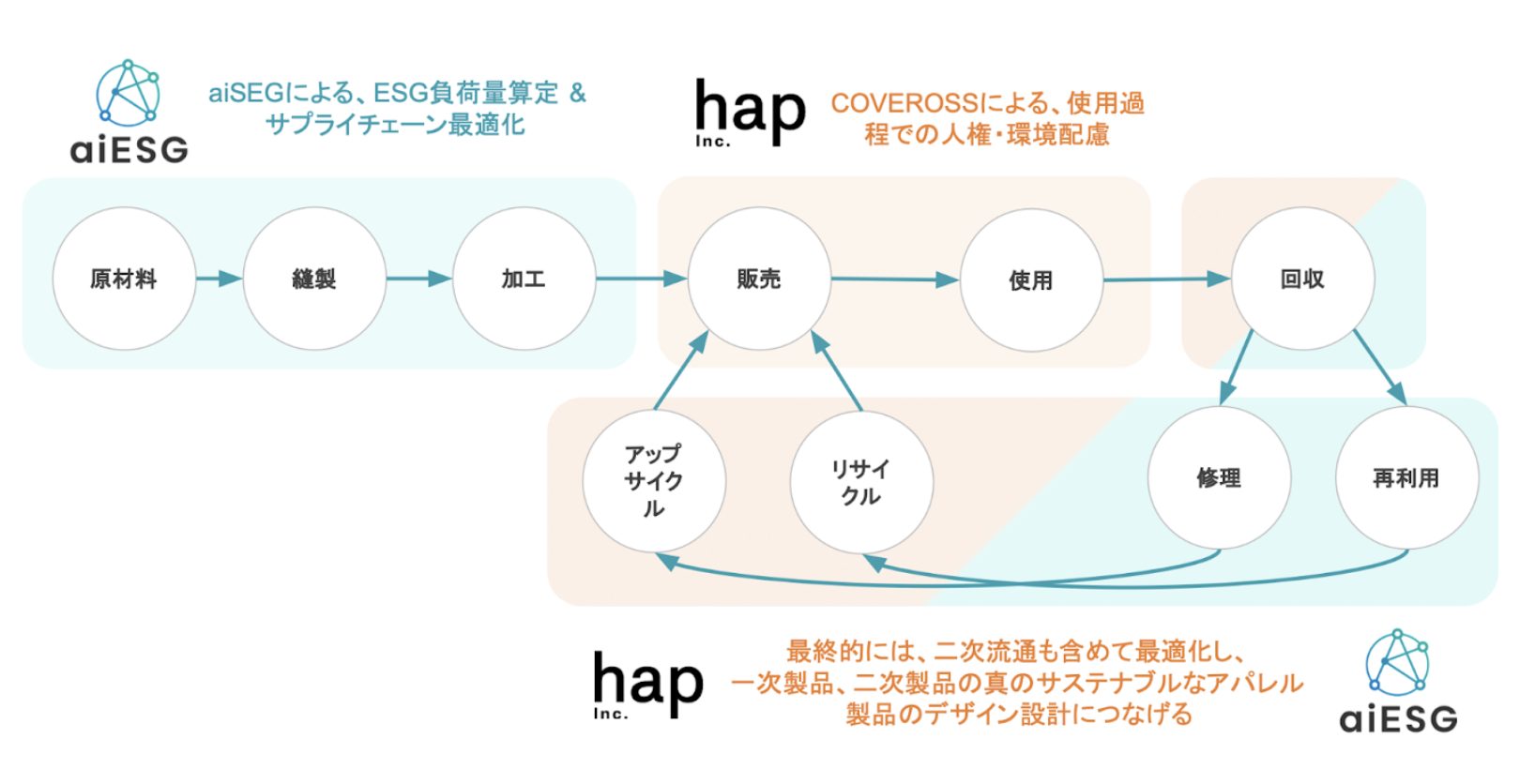
Figure 1 Scheme of collaboration between aiESG and hap
Visualize high-risk hot spots in the supply chain
1.ESG assessment of "cotton" material for skinny fit denim

Skinny Fit Denim has become a key product for hap, a major apparel company, with cumulative sales of over 1 million pairs for the American Holic brand of Stripe International, Inc. aiESG's ESG burden calculation and supply chain analysis service, which focuses on the environment and human rights ( ), which quantifies each supply chain process from raw materials to product imports and domestic logistics warehouses, we conducted a supply chain assessment per pair of skinny-fit denim.
The process of quantifying environmental, human rights, and economic impacts uses inventory data based on more than 400 data sources from the United Nations and international statistics. aiESG's services enabled us to quantify the carbon footprint and water consumption of each denim in terms of environmental, social, and economic aspects. usage, etc., could be quantified from each of the environmental, social, and economic aspects.
As part of the analysis, the following visualizes what the ESG assessment results would be if the cotton used as raw material for denim were substituted from American-made to Indian or Chinese-made.
Figure 2 shows a comparison of U.S. cotton (blue) versus Chinese cotton alternatives (orange) in key ESG assessment categories. In this radar chart, the outer side of the circle indicates better results, while the inner side indicates worse results. The larger the colored area, the better the overall ESG performance of the product.

Figure 2 Comparison of ESG scores for USA cotton products (blue) and Chinese cotton products (orange)
The further outward you go, the better the result.
The results of the analysis in Figures 2 and 3 show that the use of U.S. cotton improves the environmental index in terms of total water consumption and the social index in terms of forced labor and sanitation (communicable diseases). It can be seen that U.S. cotton is superior to Chinese cotton in both environmental and social indicators.
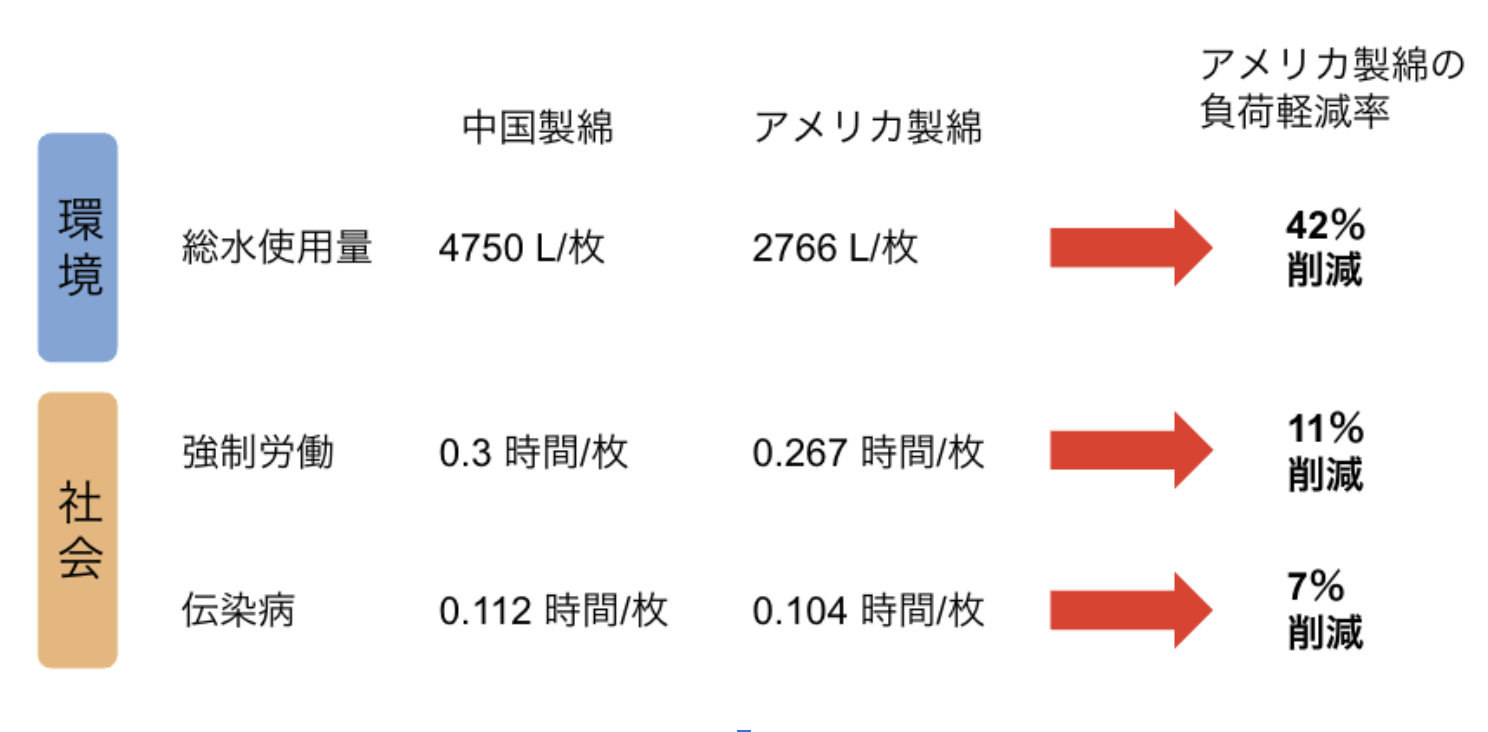
Fig. 3: The values of U.S. and Chinese cotton in the respective indices and,
Percentage improvement in ESG assessment when U.S. cotton is used (based on Chinese cotton)
It is also possible to compare the analysis of each item from a number of ESG indicators, such as water consumption and CO2 emissions. As an example, Figure 4 shows the total water consumption - fresh water in the production process of cotton made in the U.S. (blue) and cotton made in China (orange), respectively. From this analysis, it is possible to determine which part of the denim production process has the greatest impact on total water consumption - fresh water.
In the case of hap's skinny-fit denim, we found that the water load in the raw material was the highest in the production process. Using these results, it becomes clear which parts of the production process should be addressed to achieve the greatest impact.
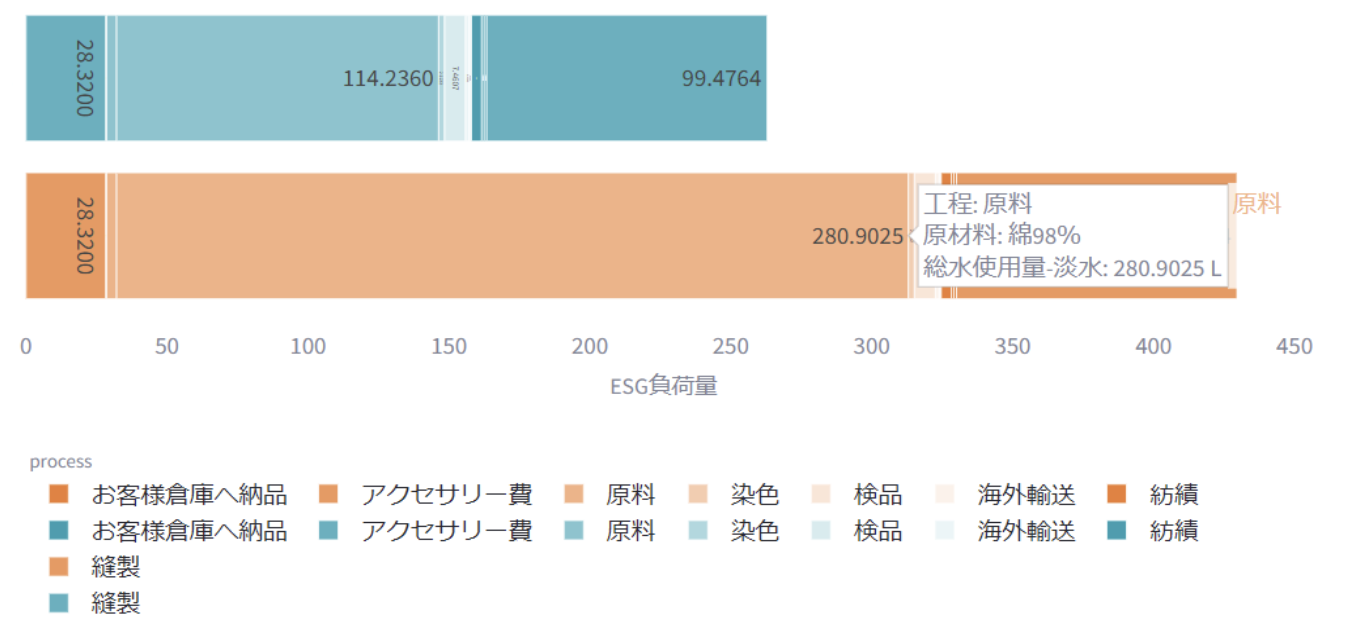
Figure 4 Total water consumption for USA cotton products (blue) and Chinese cotton products (orange) - fresh water Analysis results by process
2.Circular Fashion's ESG Indicators Rated High

In addition, COVEROSS LAUNDRY, a new upcycling service that guarantees sustainability throughout the life cycle https://coveross.jp/shop/pages/laundry) also used aiESG's ESG assessment.
In this analysis, we evaluated ESG in two situations: one in which a Kabaros laundry is used and the product is reprocessed, and the other in which the garment is discarded without being used and a new one is made from scratch. As shown in Figure 5, this analysis shows that the ESG assessment for the use of Kabaros Laundry is superior to the ESG assessment of the entire supply chain for the production of a single T-shirt, in terms of both social and environmental indicators such as child labor, forced labor, industrial accidents, and water impact.

Figure 5 Comparison of ESG assessment between Kavalos Laundry (blue) and the manufacture of one typical T-shirt (orange)
The further outward you go, the better the result.
As summarized in Figure 6, the use of the Kavalos laundry service has resulted in improvements in human rights indicators such as child labor, forced labor, and occupational accidents and fatalities. Environmental indicators also show significant reductions in total water use and energy use, and economic indicators show an improvement of 1291 TP3T in value added from wages.

Figure 6: Values for a typical T-shirt and Kavalos laundry service, respectively, in the index,
Percentage of ESG assessment improvement with Kavalos laundry service (general T-shirt criteria)
Figure 7 also shows the global distribution of wage generation. While a typical T-shirt generates wages in China and other Asian countries, Kavalos Laundry Service shows a large wage spillover effect into Japan.
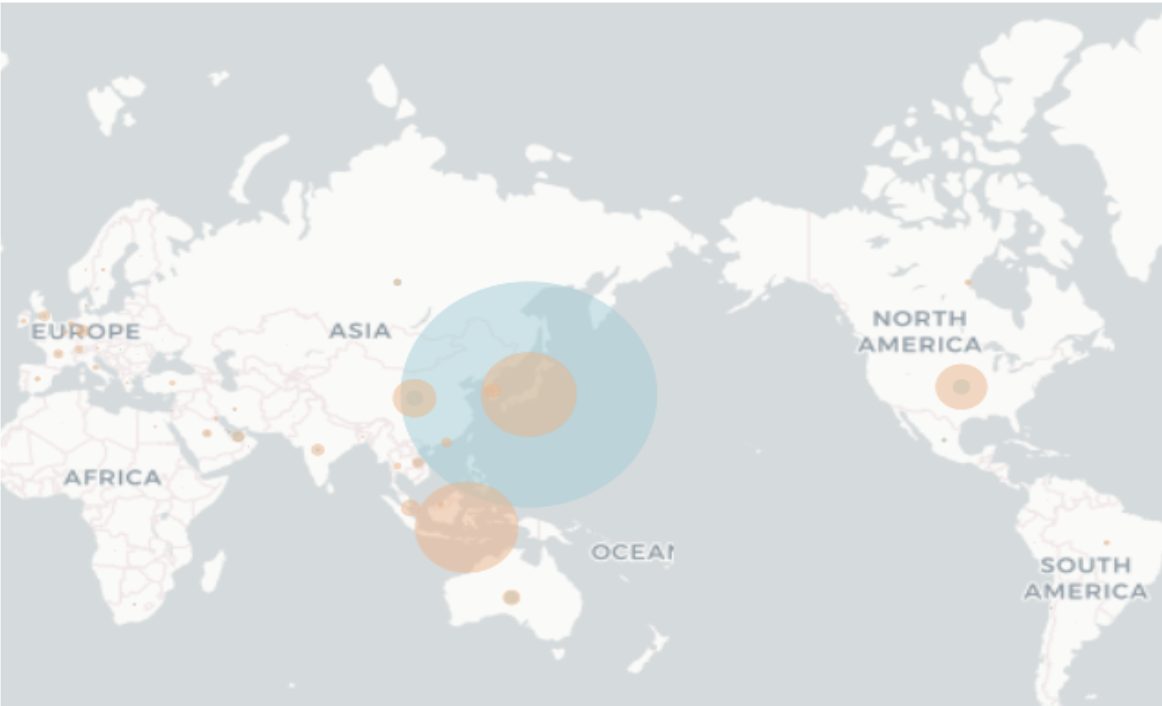
Figure 7: Global Distribution of Wage Creation
Comparison of Kavalos Laundry Service (blue) and a typical T-shirt (orange)
In addition, hap is also strengthening its efforts with select stores. 24 Spring/Summer 2012, hap is working with major apparel company Nano Universe on a sustainable line "Meaningful Continuity" that considers the natural environment and adds sustainability and functionality to its line, using Kabaros as the main material. The company also offers T-shirts with an upcycling service, Kabaros Laundry, at HÔTEL PALACE. The functionality can also be upgraded by sending it to a service factory after purchase and wear.
Furthermore, for the fall/winter 2012-25 collection, we plan to launch jeans made of environmentally friendly materials based on ESG evaluations.
HAP has stated that it will continue to pursue ESG assessments of optimal recycling through industry-government-academia collaboration, with the goal of developing an international standard for eco-design that is scientifically supported.
summary
The apparel industry's negative social impacts, such as forced labor and child labor, as well as its environmental impact, including water impact, are issues that cannot be ignored. Therefore, there is a growing need to comprehensively understand and properly manage information in the supply chain in all areas: environmental, social, and economic.
In this use case, ESG analysis was conducted throughout the supply chain at two of hap's skinny-fit denim and coveross laundry.
For skinny-fit denim, we visualized how replacing U.S.-made cotton, the raw material of denim, with China-made cotton would change the environmental, social, and economic domains, respectively. The results of the overall analysis show that U.S. cotton is superior to Chinese cotton in both environmental and social indicators. In particular, the results showed a significant decrease in water consumption for U.S. cotton compared to Chinese cotton.
The analysis also showed that COVEROSS LAUNDRY's services significantly improved ESG evaluations for both the environment and society compared to conventional T-shirts.
By using aiESG's analysis, it is possible to visualize in detail where the risk hot spots are in the supply chain and take countermeasures. aiESG supports the development of products and services that meet ESG perspectives and the formulation of marketing and branding strategies through ESG analysis. We also provide support for the development of marketing and branding strategies.
If your company is facing challenges in developing ESG-conscious products and services and marketing strategies, please feel free to contact us.
Contact us:
https://aiesg.co.jp/contact/
*Related Article*.
Prime Minister's Award winner hap and product ESG evaluator aiESG collaborate on the development of apparel products that truly consider human rights and the environment.
Nikkei Business featured aiESG's efforts in an article introducing hap, an apparel venture company.
interpoint (interword separation)[Commentary] Nikkei article: aiESG Supply Chain Analysis of "Electric Vehicle (EV) Production, ESG Indicators Deteriorate Due to 'De-China'".
interpoint (interword separation)[Commentary] The Impact of the U.S. Inflation-Reduction Act (IRA) on the ESG of Japanese EV Manufacturers (aiESG Analysis)



